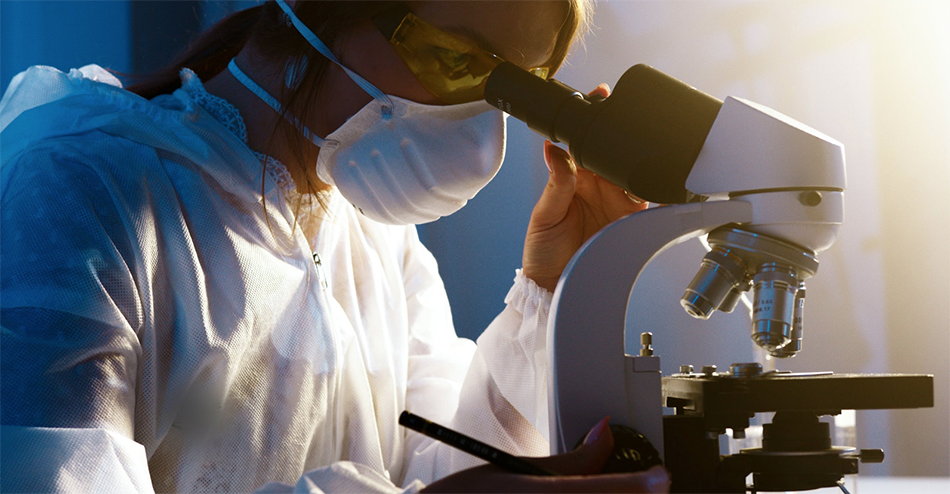
Whether you’re starting up a new lab or looking to improve or make budget cuts to an existing one, determining and maintaining a laboratory budget is the most important “next step” to take. Underfunded and understaffed; where do you start? Here’s a look at some helpful tips for creating a laboratory budget that you and your techs can live with.
Don’t Just Jump Into Buying Major Equipment
You may be tempted to start purchasing major equipment right away, but the secret to determining and maintaining your laboratory budget is understanding what you “need” and what’s “nice to have.”
- Split your equipment list into several categories, including essential, ancillary, and wishlist.
- Essential equipment includes the tools you need to store and test your samples, such as refrigerators, microscopes, and centrifuges.
- Ancillary equipment is also necessary to support your essential equipment. This list includes tubes, beakers, chemical reagents, and pipettes.
- Wishlist: This is equipment that you need in the future, although for now you can borrow the equipment from a shared facility.
- Don’t forget that common equipment, such as refrigerators or appliances, as well as some supplies including paper towels and cleaning solutions are available at lower prices at some of the big box stores.
- Buying used lab equipment is a great way to save money on your lab budget. You can also ask for donations of equipment from other laboratories or partnering labs within your facility.
- Always look into purchasing the extended warranties and protections on your equipment to save money on repair or replacement.
- Preventive maintenance is a key factor in keeping your existing equipment running efficiently.
Ongoing Costs
Once your initial setup is complete, it’s time to consider what consumables you will be using monthly. Your employees and team members will have a better idea of how many supplies they use monthly, so their input is a valuable resource.
It may take you a month or two to get the most accurate picture, but it’s estimated that an average sized lab will spend around $1000 a month on supplies such as pipettes, gloves, tubes, and slides. Next estimate how many antibodies, enzymes, and testing kits you will need to operate and add this into your basic recurring lab supply cost. Now add the cost of cleaning and maintenance supplies, as well as utility bills and rent or mortgage.
Lastly, look at your personnel spend (salaries, benefits, vacation, and sick days) and add that into the ongoing cost list.
Don’t Be Afraid to Make a Change
When balancing your laboratory budget, you may need to switch suppliers to ensure you are getting the lowest prices on your equipment and supplies. If you’re comfortable with the quality of supplies you are getting from your current supplier, don’t hesitate to reach out and try to negotiate a better price.
Be aware that not all suppliers have the same brands and not all brands are equal. Do a little legwork and research reviews on unfamiliar brands and suppliers before partnering with a new one.
Hiring Personnel is One of The Biggest Laboratory Spends
By far, hiring and retaining qualified lab personnel is one of the biggest laboratory budget expenditures your lab manager will face. Here are a few ways to keep this spend down a little.
Make your lab environment inviting: Not just the lab facilities, but in the job culture. People are willing to take a little less money in salary if they truly love their jobs.
Provide educational and advancement opportunities: You can decrease turnover in your laboratory by providing continuing education and opportunities to advance. You can add a caveat, such as the minimum amount of time an employee must work to qualify for these perks, or negotiating how much time they will need to spend with your organization if they take advantage of educational opportunities.
Go shopping for eager students: Undergraduate and postgraduate students interested in the sciences can provide much of the help you need in the lab. These students can work as assistants in any number of departments. You may be able to contact universities and see if you can offer credit to student volunteers.
Offer great benefits: Circling back to the happy employee, offering great benefits is a way to make the job more inviting when you can’t pay candidates quite as much as a competitor could. A generous vacation policy, affordable health benefits, buy-in retirement plans, or even stock options can be used as leverage for your potential candidates. The costs of these benefits will be far less than the costs of high-turnover rates such as constantly training and equipping new employees.
Determining and Maintaining a Laboratory Budget: Keeping the Records
Now that you’ve created a basic guideline for creating your laboratory budget, it’s time to put it altogether. Excel spreadsheets are one option, but they can be cumbersome and confusing.
Many labs turn to solutions such as Quicken, QuickBooks, and other online budget software.
Once you’ve determined your budget, inform your teams of how it will affect them. Ultimately, it will be a shared responsibility to maintain the laboratory budget.
BaneBio has ways to keep your laboratory running within budget, from used equipment to cost- saving preventive maintenance contracts and repair services. Contact us today and let us show you how we can keep your operations running efficiently and economically.

